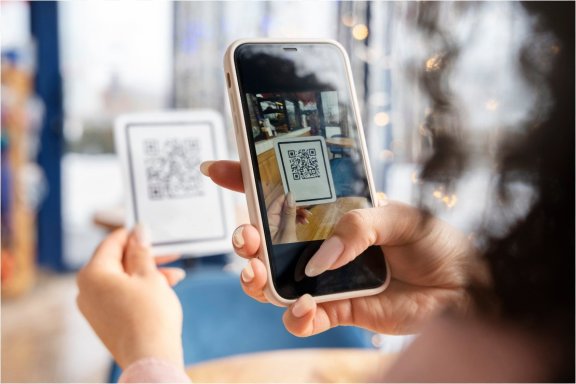QR Code Scams: What You Need to Know

QR codes have become increasingly popular in recent years, used for everything from contactless payments to marketing campaigns. However, as with any new technology, there are always those looking to exploit it, especially with easy access to making them through QR code generators.
Recently, a 60-year-old woman lost $20,000 after filling out a QR code survey for a free drink showing the unfortunate, but real, effects the scams have. In this post, we'll explore some of the ways QR codes are being used to scam and spread malware, and what you can do to protect yourself.
QR Code Scams: How They Work
QR code scams typically involve a criminal placing a fake QR code over a legitimate one. When a user scans the code, they are taken to a fraudulent website or app, which can then be used to steal personal information or install malware on the user's device.
One common tactic is to place fake QR codes on parking meters or public transportation kiosks. When a user scans the code, they are taken to a website that looks like a legitimate payment portal, but in reality, they are entering their credit card information into a phishing site.
From surveys to realistic, but fraudulent, retailer sites, scammers are tricking innocent consumers. Through these tactics, hackers can take control of your data, and keep it unusable until you pay a fee, use malware to track your location, steal your personal information such as contacts, and possibly use your webcam.
Real-World Examples
QR code scams have caused multiple cases of real-world harm. In one case, a woman in Louisiana was charged $788 by Walmart after scanning a fake QR code in a parking lot. The code promised a discount on her parking fee, but instead, it authorized a purchase of $788 worth of merchandise on her Walmart account.
In another case, a fake QR code scanner app was discovered on the Google Play Store. The app looked legitimate, but in reality, it was malware designed to steal users' personal information.
How to Protect Yourself
Fortunately, there are steps you can take to protect yourself from QR code scams.
First and foremost, be cautious when scanning QR codes. If the code seems suspicious or too good to be true, it probably is. Look for signs of tampering, such as misaligned graphics or a different shade of color. If you're unsure, use a QR code scanner app to check the code's authenticity before scanning it with your phone's camera.
Secondly, keep your phone's software up to date. Many QR code scams rely on exploiting vulnerabilities in outdated software, so regularly updating your phone's operating system can go a long way in keeping you safe.
Finally, be aware of your surroundings when scanning QR codes. If you're scanning a code on a public kiosk or display, make sure it's a legitimate source before entering any personal information. Checking for misspellings, odd URLs, and more, can save you from being scammed.
Conclusion
QR codes are a powerful tool for businesses and consumers alike, but they are not without risks. By being vigilant and aware of the potential for scams, you can protect yourself and your personal information from harm.
Looking for further protection from malware, spam, and more? The Buckeye Brainiac team of technology experts is here for your technology and security needs. Visit our Brainiac page or visit your nearest Tech Hub for assistance
